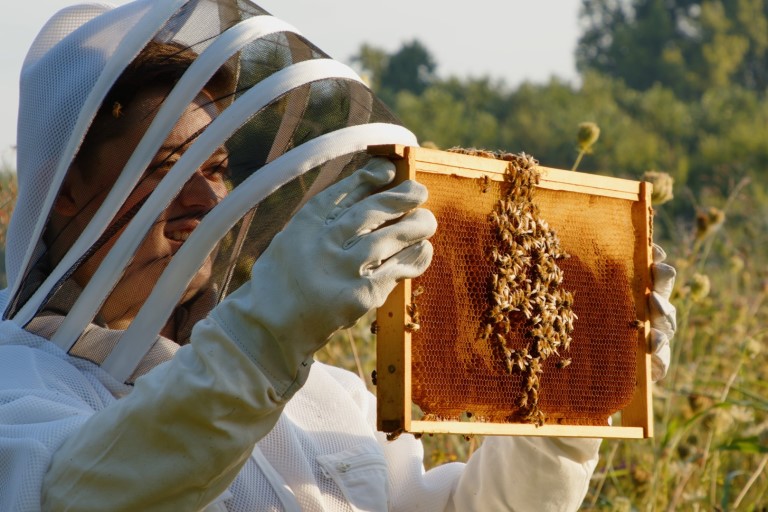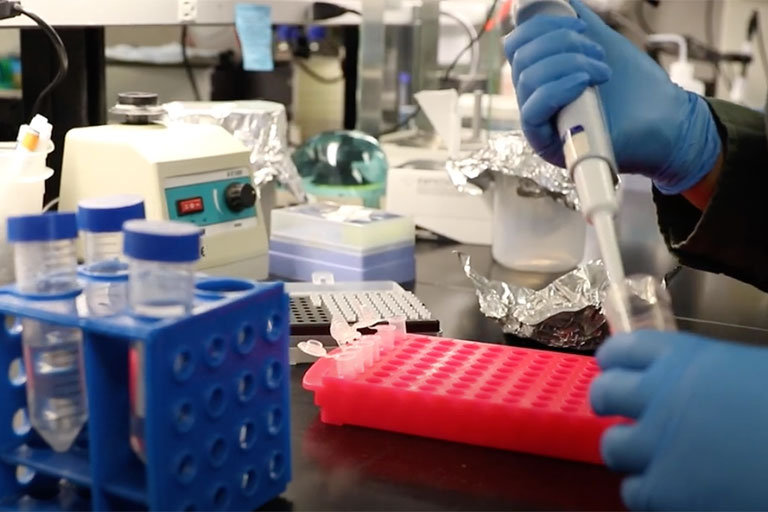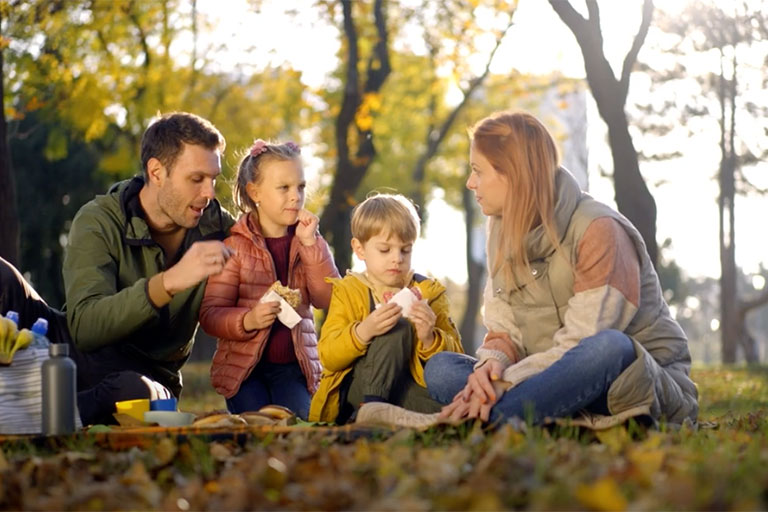Description of the video:
[Audio: Upbeat Music Plays. Video: A side by side shot of a campus tree and a green IU lamppost. Three different trees are stacked on top of each other in a side-by-side comparison]
For the tree inventory on IU's campus, we did a comprehensive inventory
of all of the freestanding trees.
[Video: standing in a beautiful part of campus, Hannah Gregory appears from the shoulders up speaking on camera]
Hi, I am Hannah Gregory. I'm a tree technician and researcher with Indiana University's Landscape Services.
[Video: Fall scene of IU Sample Gates, followed by a video of orange leaves on tree tops over a close up of a tree trunk. Next we see a shady yellow pathway on campus with falling leaves, and then another side by side showing a tree shading a building, over a close up of a tree trunk.]
From the IU inventory, we can get a snapshot of the benefits that the trees provide to campus, ecological benefits, economic benefits, social benefits. So, things like the trees shade the buildings and lower the energy costs.
[Video: We see Hannah and two other students points up, and above them is a tree viewed from below. A close up of a hand swiping on an iPad, and then the three students looking at ipads and trees. Next to a close up of a campus tree. After seeing more fall foliage, we see hands unspool a tape measure, and then apply that around a tree trunk to measure it. The camera tilts down to reveal a part of campus seen through a limestone archway.]
What we do is we walk up to a tree. We locate the points that's in our inventory. So, we have an iPad with all the tree points. We select the point, make sure that it's the correct tree. So, we make sure that the species is identified correctly. Then what we'll do is we will measure the tree and put the size into the iPad. And the great thing about the IU inventory is that it does have a long term impact on campus.
[Video: Mike Girvin appears on camera standing outside.]
I'm Mike Girvin. I'm the landscape coordinator for facility
operations at Indiana University.
[Video: an orange-colored branch overshadows a section of Sample Gates. We see another vibrant tree next to a limestone building. The camera pans from an old limestone campus building to reveal the beautiful tree next to it. Mike Girvin is seen touch a tree trunk, studying it, and then we see a shady part of campus with trees next to the small Campus River. Next we see the campus tree inventory map that slowly dissolves to revel the 1936 Olmsted Map of campus.]
We knew we needed a tree inventory to manage these assets. And this is really a critical component if we want to keep IU looking like IU. Certainly, the data is so valuable. I like to think the groundwork we're laying today will be carried out long into the future. But what we've been able to do is overlay our tree inventory with the Olmsted maps and see what trees
still exist from that time period.
[Video: Undergraduate student Sara Carter appears on camera sitting down next to a library wall of books. We see the IU University Archives logo on a window, above a bright blue map of campus. Her hands appear on screen slowly pointing at the map, while above a different close up of the map is seen. Sara is seen in front of the maps in real life, turning the pages and using a magnifying glass on them. Several close up shots show the detail on these old maps, and then a date tag is seen with OCTOBER 23rd 1936. Finally we see her hands on the map again, as we view another close up of the original map.]
My name is Sara Carter. I am an undergraduate studying
environmental management at Indiana University. The map covers both topography and the trees on campus, and it was my role to immortalize them through technology. And they will forever be digital now. This project was definitely the first step in painting that picture. So, we have to have this historical anchor and baseline to fall back on as we move through time and complete these new inventories.
[Video: Back on campus outside, we see Hannah and two other students examining a tree and pointing. A side by side shows students walking along paths with beautiful fall colors around. A slow pan reveal Hannah and two other students standing next to a tree. Audio: music swells and resolves. Video: on screen text reveal the IU Research logo with URL impact.research.iu.edu fade to black.]
I think doing this sort of work really connects students with their communities. It's hands on experience outside of the classroom. And I think projects like these are perfect because they benefit both the student and the organization that the work's being done for.




